Risk Identification and Mitigation Report: Santa Rosa Wildfire Hazards
VerifiedAdded on 2022/08/26
|5
|784
|20
Report
AI Summary
This report focuses on risk identification and mitigation related to wildfires in Santa Rosa, California. It begins by providing background information on Santa Rosa and Sonoma County, highlighting the area's demographics and geographical features. The report identifies the immediate threat of wildfires, referencing the Kincade and Tubbs fires, and emphasizes the loss of property and vegetation as major risks. It presents a risk assessment based on potential wildfire hazards and the community's existing hazard mitigation plan. The author proposes low-cost housing as a key strategy to minimize economic losses from wildfires and discusses the likelihood of risk occurrence and the effectiveness of infrastructure in controlling it. References from relevant academic sources are also provided, supporting the analysis and recommendations.
1 out of 5
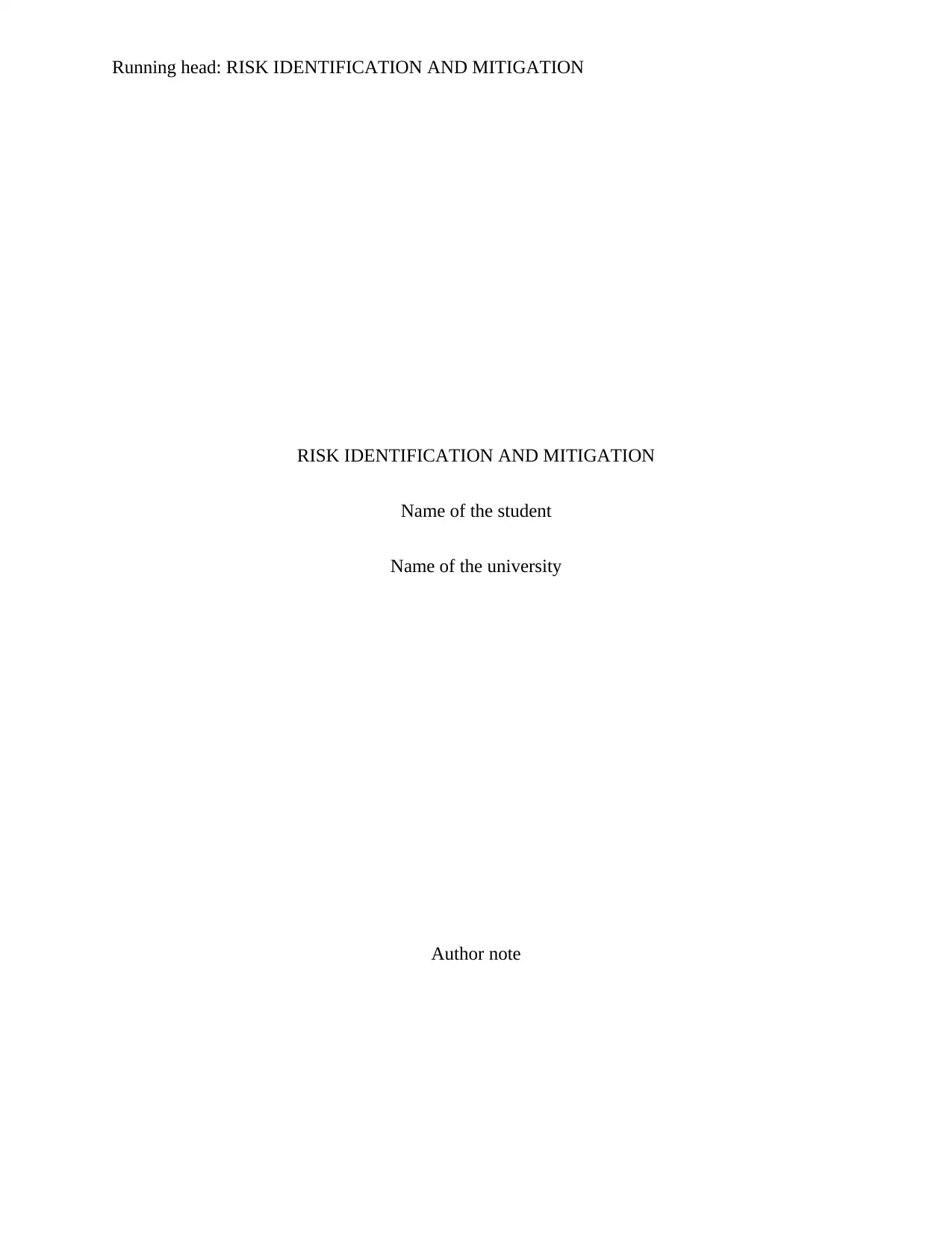
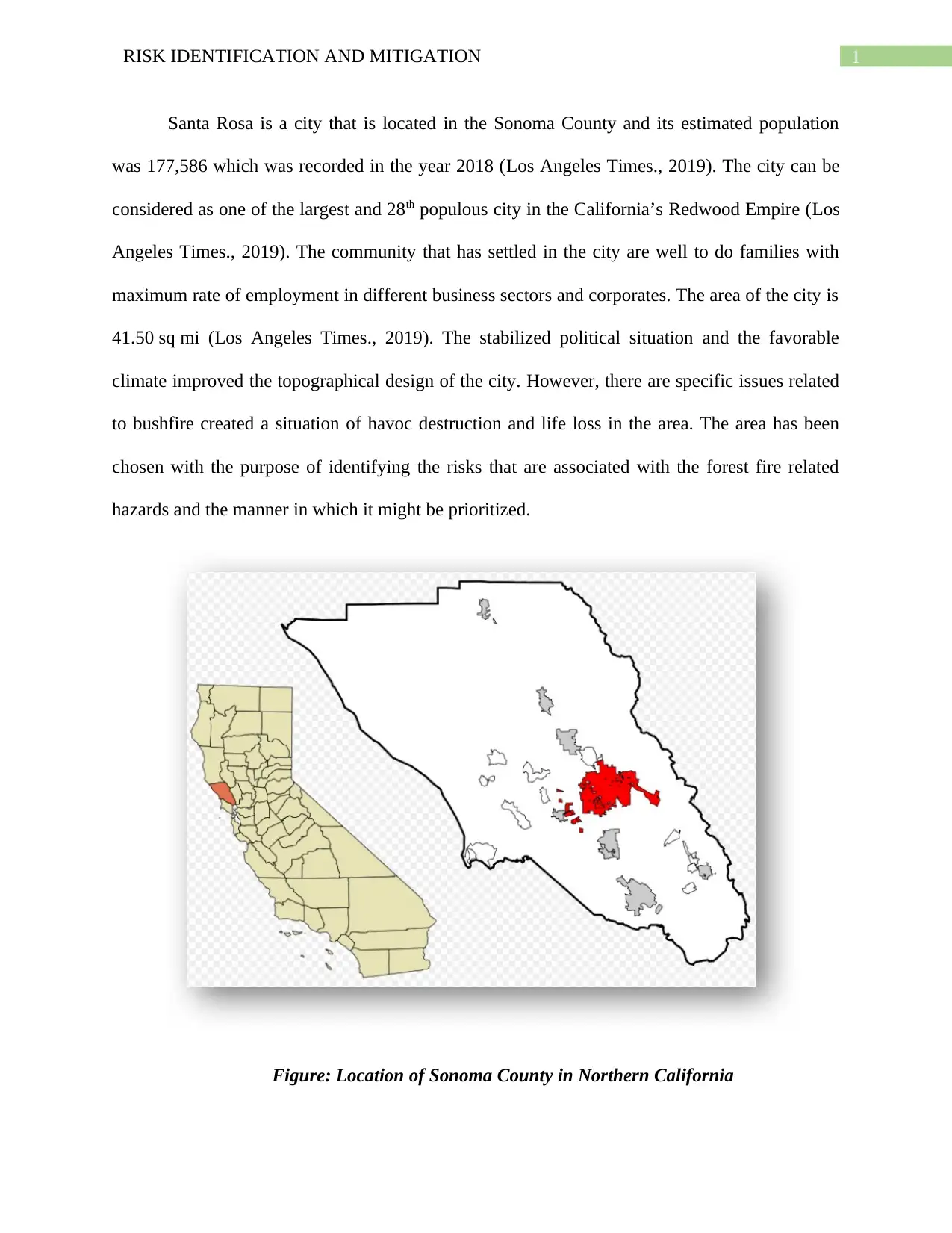
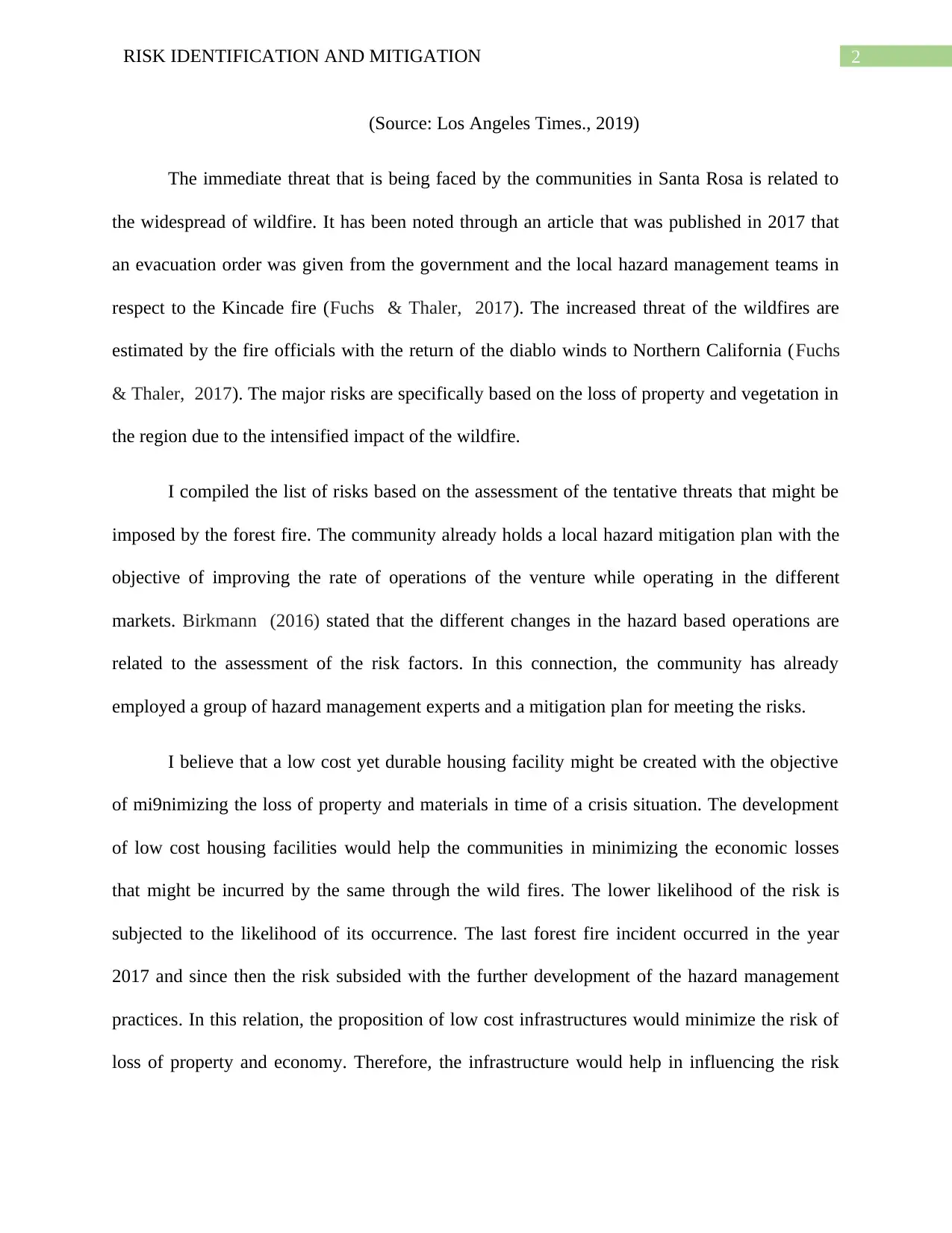

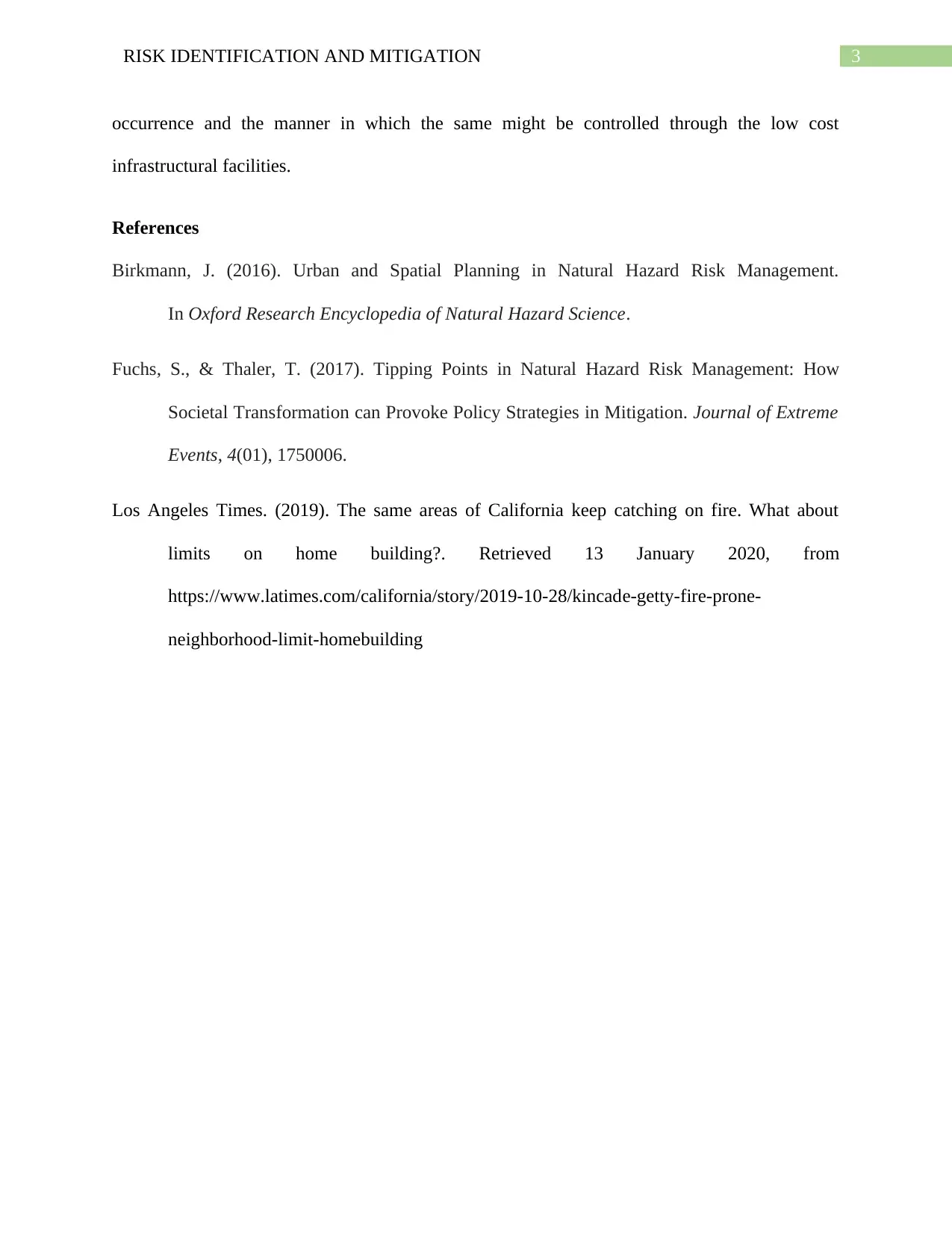
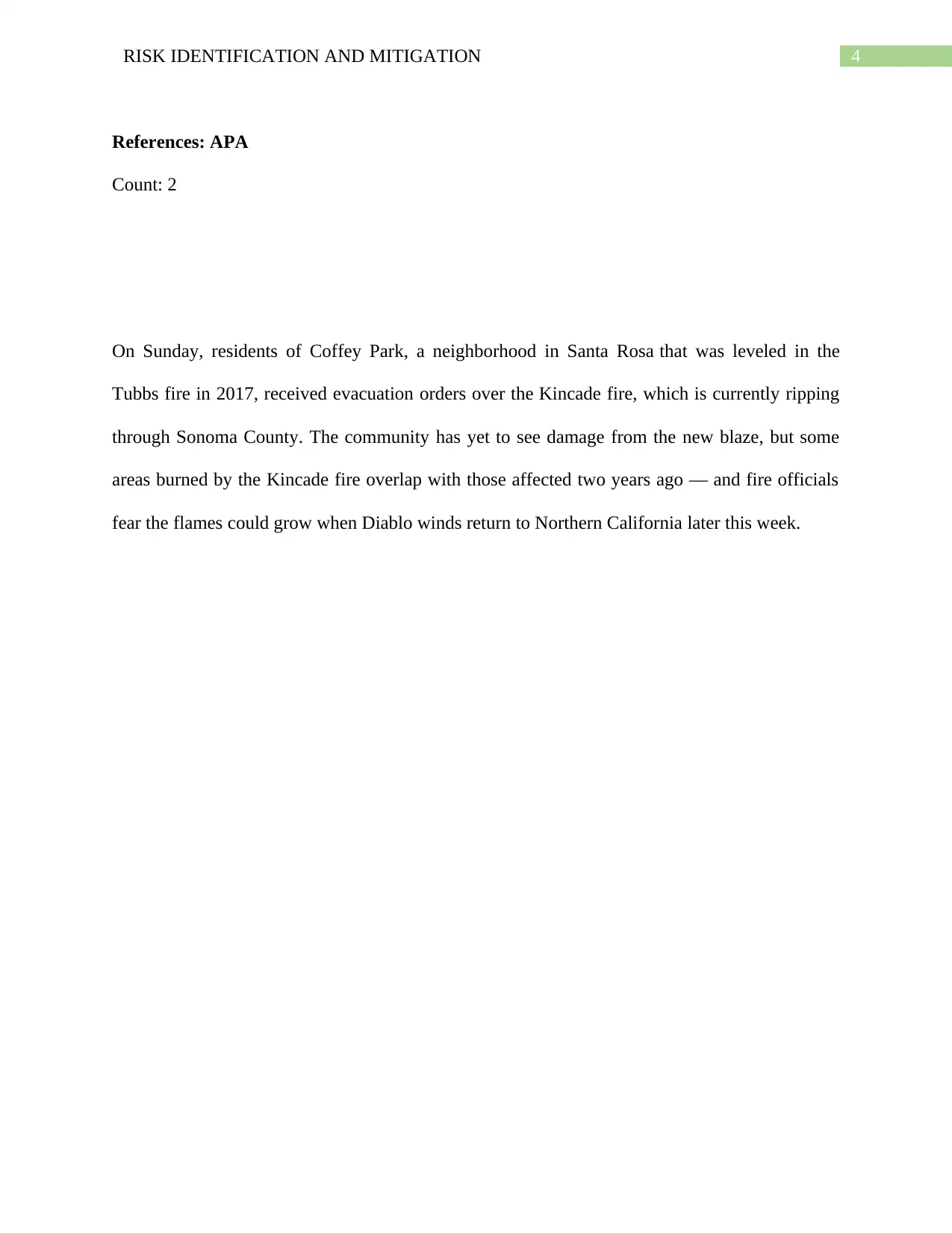
![[object Object]](/_next/static/media/star-bottom.7253800d.svg)